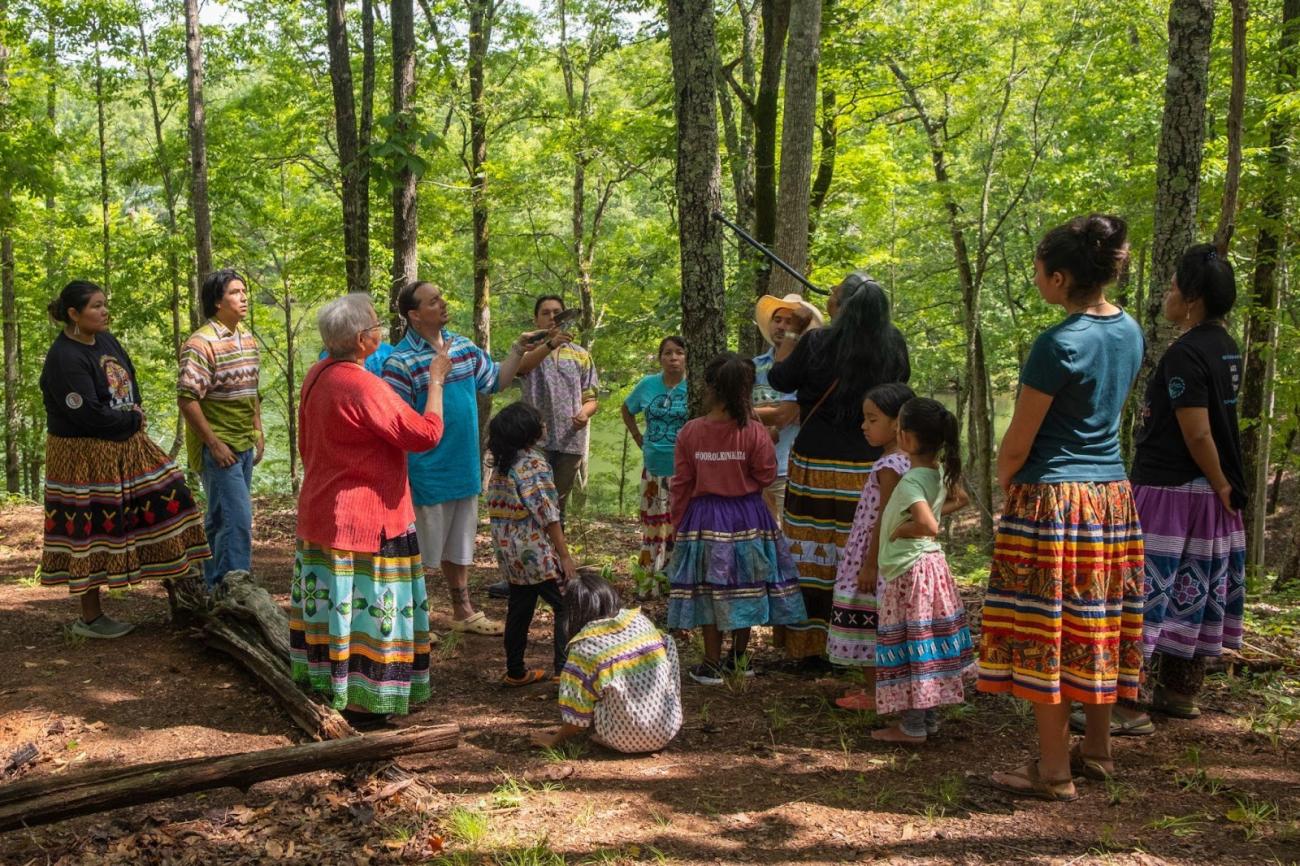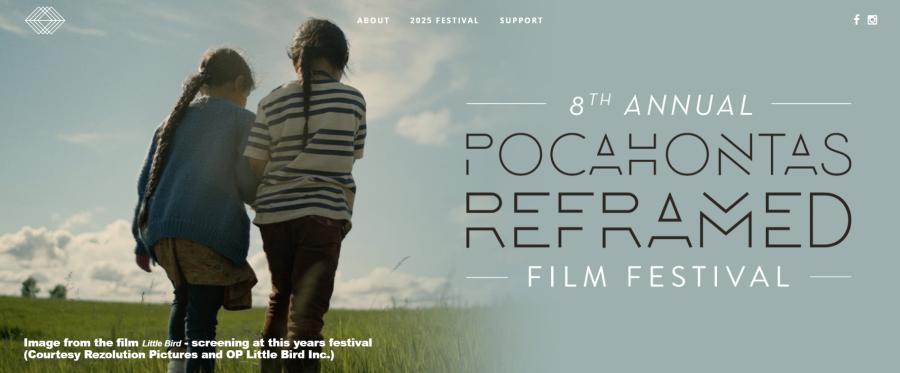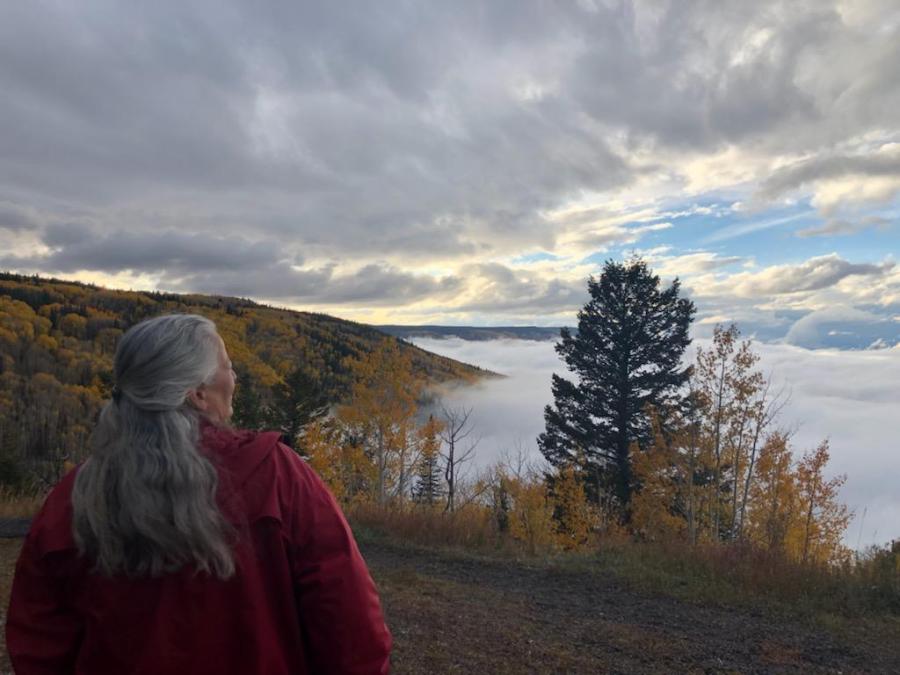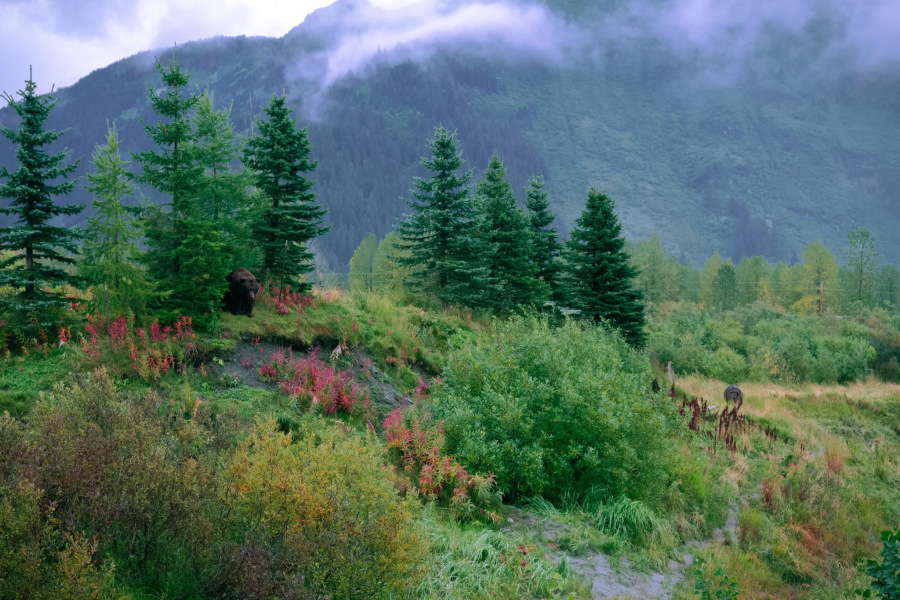
The story of the Maskoke Peoples is, as that of all Indigenous Peoples of Turtle Island, a story of dispossession, cultural assimilation, and treaty violations. Forced out of their homelands by government-imposed removal policies, Maskoke People were displaced from their territories in 1836. Only in 2018, did a small community of Maskoke People finally rematriate some of these ancestral lands and return to live once again in what is today called Alabama. Ekvn-Yefolecv, (ee-gun yee-full-lee-juh), a term that embodies the meaning of “returning to Earth/returning to the homelands,” is an ecovillage community that lies on 2,657 acres and was created for the purpose of linguistic, cultural and ecological sustainability. There are only a handful of remaining Maskoke persons who speak their language, so an important part of the community’s efforts are directed toward language revitalization through immersion wherein children are raised exclusively in the Maskoke language, with their curriculum centering on traditional agricultural and ecological knowledge. Their efforts have proven successful, as they are now home to the only fluent-speaking Maskoke children on the planet.
Food sovereignty, including the decolonization and reIndigenization of their diets, is a major component of their daily lives; Maskoke elders too often die prematurely of chronic illness, taking with them their language and ancestral knowledge. Returning to a more traditional diet is crucial to securing better health conditions for the ecovillage. With support from the Keepers of the Earth Fund, residents embarked on a project to reintroduce important elements of the traditional diet. The lake sturgeon, sacred to the Maskoke People, was extirpated from Alabama’s streams in the 1950s by a combination of factors, including the construction of hydroelectric dams and the deliberate removal by settlers. The community built an aquaculture facility, then traveled to Anishinaabe homelands (Ontario, Canada) to spawn the fish, return embryos to Maskoke homelands, hatch them out, grow them out, and over time have reintroduced the sturgeon fingerlings back into the watershed. They recently expanded the community’s aquaculture facility, creating space for other endangered species of sturgeon that are also native to the bioregion. Residents capture fish waste from the facility and divert it to their greenhouse in order to enhance nutrient density in vegetables they grow for community consumption.
Co-founders Tawna Little and Marcus Briggs-Cloud maintain that because Maskoke People are a traditionally agrarian society, their daily contemporary lifeways must be fixated on regenerative agriculture if their language is going to survive. Marcus, who has never spoken a word of English to his and Tawna’s children since their births, states “We had to intentionally create a space where we can live everyday in our language! It’s a pretty simple reality to comprehend that if our daily activities are not performed in our already fragile language, it will inevitably die.” He expounded on the connections between language and reIndigenization, “Our traditional lexicon inherently lends itself to conversations engaging traditional ecological, cosmological, agricultural, astronomical, ceremonial and other forms of knowledge; so, instead of changing our language to accommodate the environmentally abusive realities of settler-colonial industrial capitalist ideology, we needed to change the way we live by recreating a society in which our language once functioned best- one premised on ecologically regenerative lifeways.” Among their commitments to regenerative agriculture, is Ekvn-Yefolecv’s return of bison to the landscape, as well as critically endangered livestock breeds like American Guinea Hogs, San Clemente Island Goats, Gulf Coast Sheep, and several heritage chicken breeds. Ecovillage residents actively create silvopasture (trees, forage, and animals all coexisting on the same land), primarily for carbon sequestration, wherein they implement holistic management (intensive rotational grazing) to improve soil health.
Restoring southeastern grasslands for the proliferation of native perennials is also a priority. This species diversification effort provides a forage polyculture in the pasture that ultimately improves the ruminants’ omega 3:6 ratio and phytonutrient richness, in turn providing nourishing meals for ecovillage residents upon harvest of those animals. After becoming residents of the ecovillage, adhering to the community’s diet has led to several persons dropping significant weight and reclaiming their mobility, others having ended dependence on formerly prescribed pharmaceutical medications such as antidepressants and even insulin for diabetics. The ecovillage’s reintroduction of endangered species to the ecosystem has been of deep spiritual importance. Marilyn Cloud Dunson, Ekvn-Yefolecv Elder and Maskoke language speaker, sums up well the importance of these activities, “Oketv tat hiyowat, vcakēt owēpēkv, ponvttv, vpēukv, omvlkv fullicēyat vcayēcēt ponvttv vhonvpsvkvhanat svhēcēt, hompetv tis sēcvfeknickv ohfvccvn hompetv honticēt vpoket owēs. Nak-omvlkv pun somēcēkon kowēyat ohfvccvn nettv-setētayen vototketv sohfvcficēyat estē-catē em oponvkv setemponahoyēt vpokēt owēs. (This is a very sacred time. We care for these animals so that they may be restored. They make us healthy, as well as the food we grow. We are here so that all of these things do not perish, including our language that we speak everyday while we fulfill this work).
The community demands a non-toxic and ecologically regenerative built environment that includes timber framing from trees harvested on-site, conducting ceremonies to gain consent from each tree before harvest, felling and milling the trees to bypass embodied energy associated with the importation of timber from off-site, and mortise and tenon joinery with green timbers that avoids an energy-intensive wood kiln drying process involved for lumber alternatives. They install wheat straw bales and hempcrete wall systems, and then apply earthen clay-based plasters to the walls and floors. Other features of the built environment include several 20,000-gallon rain catchment cisterns, anaerobic bio-digesters that combine human and animal manure with food scraps to generate methane cooking fuel, net-carbon-negative rocket mass heaters, living roofs that are irrigated to reduce temperatures inside buildings during hot months, and a host of other low-tech integrated regenerative systems. Ekvn-Yefolecv is situated in a fire-adapted ecosystem. In partnership with The Nature Conservancy, they have burned 2,000 acres of their ecovillage over the past four years for the restoration of the critically endangered montane longleaf pine ecosystem, which hosts the culturally significant, yet endangered, red-cockaded woodpecker. Ekvn-Yefolecv is an income-sharing community, meaning all residents of the community work daily throughout the ecovillage in exchange for food, lodging, and a $400 monthly stipend.
As co-director Tawna Little put it, “I formerly associated this envisioned ecovillage way of life with being poor, which is how I grew up. I promised myself I would get out of poverty, and here I am using composting toilets and living on four hundred dollars a month. But I realize that in having the privilege of working directly with Earth every day that I am not poor, and that I have agency in choosing to live in right relationship with Her. We hold the land in common and commit to living simply in recognition that the accumulation of money is tied to the abuse of Earth and the exploitation of human bodies around the world.” Ekvn-Yefolecv continues to work to build a linguistically, culturally, and ecologically resilient community for future generations to inherit. Kvlpv Jeter shared, “We are honored to be a partner of Cultural Survival’s Keepers of the Earth Fund, especially because the very name of the fund encapsulates all that we stand for in our ecovillage, and it feels so good that they see us and support us in our efforts to be good stewards of our Indigenous Maskoke homelands!”
In 2020 and 2023, Ekvn-Yefolecv received a Keepers of the Earth Fund (KOEF) grant to support their work. KOEF is an Indigenous-led fund within Cultural Survival designed to support the advocacy and community development projects of Indigenous Peoples. Since 2017, KOEF has funded 310 projects in 41 countries through small grants totaling $1,603,307, as well as provided technical assistance benefiting 328 Indigenous Peoples. KOEF provides grassroots Indigenous-led communities, organizations, and traditional governments to support their self-determined development projects based on their Indigenous values. Predicated on the United Nations Declaration on the Rights of Indigenous Peoples, Cultural Survival uses a rights-based approach in our grantmaking strategies to support Indigenous grassroots solutions through the equitable distribution of resources to Indigenous communities.
Top photo: Maskoke residents of Ekvn-Yefolecv gather for ethnobotanical education in a language immersion context, on their traditional homelands they rematriated, 180 years after forced removal. Photos courtesy of Ekvn-Yefolecv.



